Episode 182: STS-96 - Additional Supply Depots Required (ISS Resupply 2A.1)
Table of Contents
On the first resupply mission to the ISS we’ve got tons of stuff to transfer, a disco ball to deploy, and a surprising number of quotations from Dan Barry! We’ll also celebrate the video games and websites of the late 1990s.
Episode Audio #
Photos #
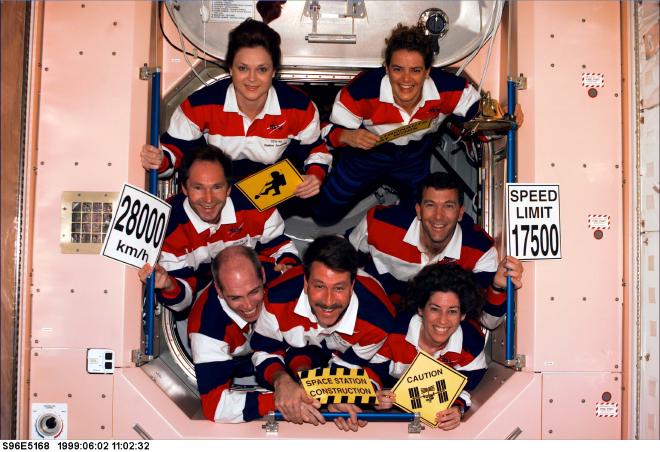
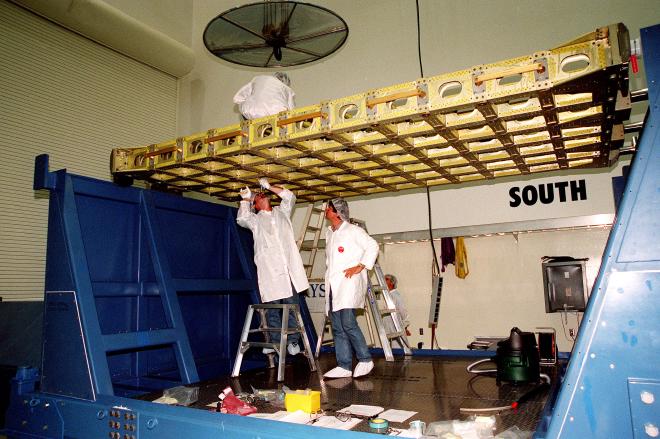
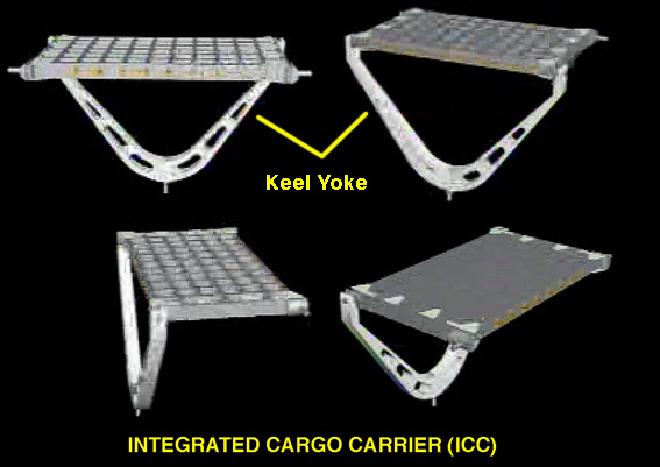
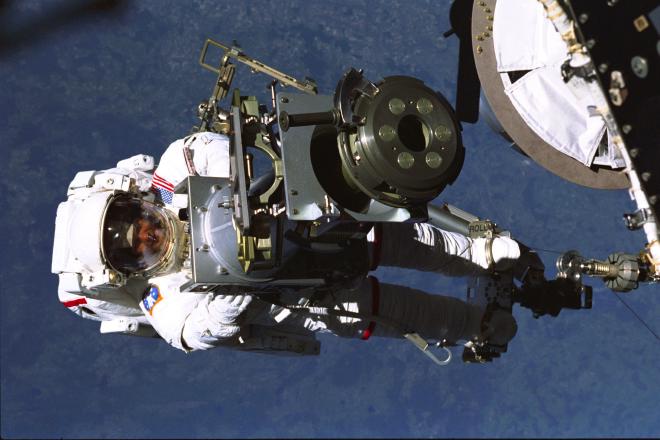
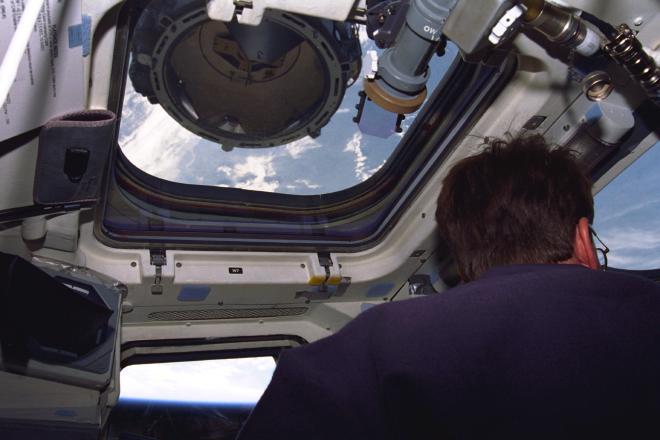
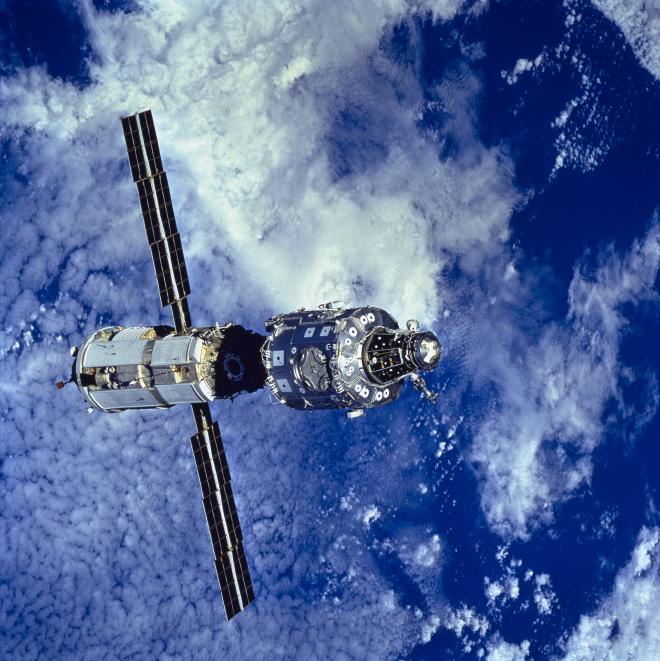
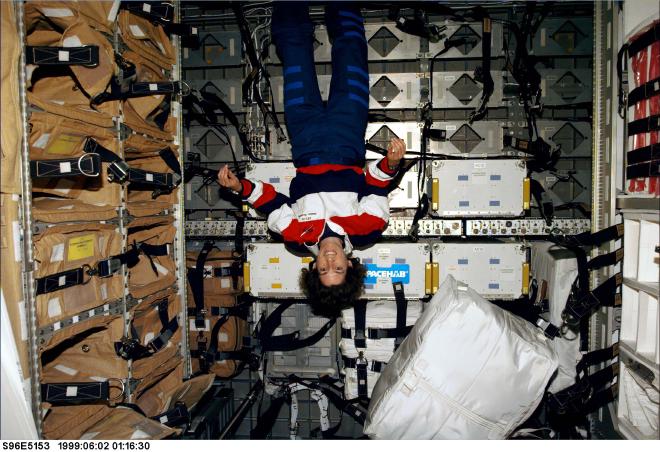
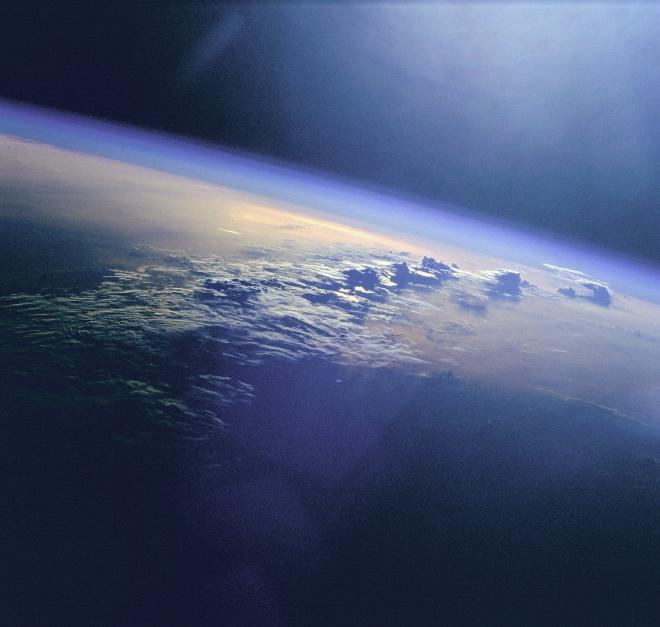
For more photos, head over to our friends at Wikiarchives.space: https://wikiarchives.space/index.php?/category/600
Post-Flight Presentation #
Weird CG Movies #
Please enjoy these somehow strangely hilarious 90s-era CG movies of STS-96 operations.
Click here for full video details.
Click here for full video details.
Click here for full video details.
Dan Barry StarCraft interview #
Full interview page available here.
Transcript #
NOTE: This transcript was made by me just copying and pasting the script that I read to make the podcast. I often tweak the phrasing on the fly and then forget to update the script, so this is not guaranteed to align perfectly with the episode audio, but it should be pretty close. Also, since these are really only intended to be read by myself, I might use some funky punctuation to help remind myself how I want a sentence to flow, so don’t look to these as a grammar reference. If you notice any egregious transcription errors or notes to myself that I neglected to remove, feel free to let me know and I’ll fix it.
Hello, and welcome to The Space Above Us. Episode 182, Space Shuttle flight 94, STS-96: Additional Supply Depots Required
Last time, we finally entered the era of the International Space Station, as we rode along on Space Shuttle Endeavour for the first ISS assembly mission. We captured Zarya, plunked it on top of Unity, and connected more cables than a 90s-era LAN party on the exterior of the nascent space station. The mission was a success, but with weight always being a limitation in spaceflight, Unity was launched more or less empty. Today, we’ll return to the station and bring along a few tons of helpful stuff to be used by future crews.
It’s actually been a while since our last flight. STS-88 landed in the middle of December, 1998, but STS-96 wouldn’t get off the ground until June of 1999, six months later. Part of the reason for this was some hail damage sustained by Space Shuttle Discovery’s external tank, which necessitated a roll back to the VAB for repair, but that only added a week. No, most of the delay was added when several ISS-related flights were pushed back due to the continued problems with Zvezda, the Russian-made service module for the station. Unlike Zarya, Russia had to pay for Zvezda themselves, and Russia was not exactly rolling in cash at this point in history, so delays were inevitable.
One thing that this six month hole in the launch manifest made me think of was STS-90, Neurolab. Remember how at the end of that flight I mentioned that the scientific return was so great that there was serious consideration given to reflying the exact same orbiter, crew, and payload, similar to STS-83 and STS-94? Well, this idea was eventually canceled at least in part due to concern about impacting ISS flights. This is a bummer since here we are with nothing flying for six months. But oh well. I’m sure that planning out what flies when is a borderline impossible task, so I’m not here to judge. Just would’ve been nice to sneak another mission into that six month gap.
But even without the service module in place, there was still work to be done on the ISS, so let’s meet the crew who will be doing that work today.
Commanding this mission is Kent Rominger. We know Rominger from a few flights, but most recently as the Pilot on STS-85, which took CRISTA-SPAS out to play and also tested a new Japanese robotic arm. With this mission he’ll be moving from the front-right to the front-left of the flight deck as he moves into the Commander role on this, his fourth of five missions.
Taking Rominger’s old seat at the front-right is today’s pilot, Rick Husband. Richard Husband, who went by Rick, was born on July 12th, 1957 in Amarillo, up in the panhandle of Texas. He earned a Bachelor’s degree in mechanical engineering from Texas Tech University, and would later earn a Master’s in the same subject from California State University in Fresno. In between those two stints in school, Husband joined the United States Air Force, starting out as a second lieutenant and learning how to fly at Vance Air Force Base. After that he was sent to Florida to learn how to fly the F-4, and then was assigned to Moody Air Force Base in Georgia. A few years later he headed out to California where he was an F-4 instructor pilot, and while he was out there he graduated from the Air Force Test Pilot School. As a test pilot he continued to fly the F-4 as well as a variety of F-15 models. He was then stationed in England as an exchange test pilot with the Royal Air Force, which I believe is where NASA found him when he was selected as an astronaut in 1994. This is Husband’s first of two flights, and unfortunately that second flight was STS-107, the doomed final flight of Space Shuttle Columbia. With his introduction, we have now met all three spaceflight veterans who would go on to fly on STS-107: Chawla, Anderson, and Husband.
Sitting behind Husband was Tammy Jernigan. We’ve known Jernigan for a while now, going all the way back to her first flight on STS-40, and of course her frustrating experience with a jammed airlock hatch on STS-80. Well today, we’ll set things right on the EVA front. Which is good, because this is Jernigan’s fifth of five flights.
Sitting in the middle of the flight deck we find today’s Flight Engineer, Mission Specialist 2 Ellen Ochoa. We know Ochoa from that cool photo of her on her first mission, STS-56, playing a flute on the Orbiter’s flight deck. But most recently we know her from STS-66, the ATLAS-4 flight, where she served as Payload Commander, overseeing a suite of atmospheric experiments. This is Ochoa’s third of four flights.
Moving down to the middeck, we find Mission Specialist 3, Dan Barry. When we last saw Barry, it was on STS-72, perhaps best remembered for its ground-up rendezvous and retrieval of the Japanese Space Flyer Unit. Barry headed outside on that flight to help test tools and techniques for ISS assembly, and today he’ll be heading outside for an EVA on the side of the actual ISS! This is his second of three flights.
Next to Barry was Mission Specialist 4, Julie Payette. Julie Payette was born on October 20th, 1963 in Montreal, Quebec, in Canada. She earned a Bachelor’s degree in Electrical Engineering from McGill University, and a Master’s in Computer Engineering from the University of Toronto. She put those degrees to work helping to research computer systems, natural language processing, and automatic speech recognition. She worked at IBM in Canada, the University of Toronto, IBM in Zurich Switzerland, and BNR/Northern, a Canadian telecommunications company. And that’s where she was when the Canadian Space Agency selected her to become an astronaut in 1992. This is her first of two flights.
And last but certainly not least, Mission Specialist 5, Valery Tokarev. Valery Tokarev was born on October 29th, 1952 in Kap-Yar, in the Astrakhan region of Russia. He graduated from the Stavropol Higher Military Aviation School, where he learned how to fly. He spent the next few years in the Soviet Air Force as a pilot, senior pilot, flight leader, and deputy flight squadron-leader. He then became a test pilot with the Chkalov State Research Test Institute. After becoming proficient in 44 types of airplanes and helicopters, including test piloting carrier-based aircraft, it’s no surprise that he was selected as a cosmonaut in 1993. Something I’m a little confused by is that his official bio says that he was selected to train for the Buran, the Russian equivalent to NASA’s Shuttle, but I didn’t think the Buran program was still going as late as 1993. In any case, Buran never flew again after that one test mission, but Tokarev would still get to fly on a big white spaceplane, just maybe not the one he expected. This is his first of two flights.
As I mentioned earlier, Space Shuttle Discovery was on the pad and all ready to go when Mother Nature decided she had other plans, buffeting the Kennedy Space Center with a hail storm. Enough damage was done to the External Tank that the stack had to be rolled back to the VAB for a few days of repair, slipping the launch by seven days.
Seven days later, the weather cooperated, and on May 27th, 1999 at 6:49 and 42 seconds AM Eastern Daylight Time, Space Shuttle Discovery lifted off for the 26th time. During the launch, a new system was keeping a close eye on things. Well, sort of new, it actually flew on STS-95 and I neglected to mention it, but let’s just pretend it’s new. The Integrated Vehicle Health Monitoring system, or IVHM, is a pretty slick new concept that, as the name implies, is monitoring the health of the Orbiter vehicle. Now, that in itself is nothing new, there are tons and tons of sensors and systems keeping an eye on things in the Orbiter, but this one has a different goal: speeding up vehicle processing times on the ground. The idea here is that if the Orbiter can basically phone home and tell ground crews how systems are performing, and which ones are likely to need maintenance soon, and in what way, the ground can be preparing while the Orbiter is still in space. And IVHM has some smarts in it too. You might be surprised at just how much data can be generated by monitoring spacecraft systems, and it can quickly become impractical to beam it all down to the ground, especially when more mission critical stuff takes priority. So IVHM could actually process some of the data on board, and only send that processed data down. I don’t know the actual technical details, but it would be like if instead of sending down several gigabytes of raw data about how a particular valve performed, IVHM just said “hey, valve number two is getting kind of sticky.”
IVHM is a really interesting idea and it caught my eye because I know that these days commercial airliners and even some personal cars do this same sort of thing. I’m not sure if NASA’s innovation came first here, but it’s cool to see yet another spaceflight technology making its way to everyday consumers. Even if it means we get cars that creepily phone home. Anyway, IVHM operated through propellant loading, ascent, and the first hour of the flight before being switched off, and was then activated for an hour a day throughout the mission, giving ground crews insight into what would need attention when Discovery came home.
If this was a video podcast, that whole aside would have happened while paused on a freeze-frame of Discovery just as it lifted off of the pad, so let’s get back to the launch in progress. In an interview with the Smithsonian, pilot Rick Husband talked about his unique view during the launch, saying quote: “While we were sitting on the launch pad waiting to launch STS-96, I noticed a thin layer of clouds above us. I don’t know how high they were, but my guess is that they were around 10,000 to 12,000 feet. As I sat there, I got to thinking it would be a pretty impressive demonstration of our speed if I had the presence of mind to look out the window as we passed through the layer. We launched shortly after sunrise, and as we ascended, I timed my crosscheck of the main engines and other systems to look out the front window for a few seconds just prior to passing through the cloud layer. Fortunately, I looked just in time to see the layer coming as we punched through it - it went by in the blink of an eye. Very impressive.”
The launch proceeded without incident, but later analysis did reveal something that we’ll unfortunately be discussing in lot more detail on Husband’s next flight: External Tank foam shedding. NASA had been aware of the foam shedding issue for a long time now, and while it didn’t view it as a critical safety issue, it was still making efforts to solve the problem. On today’s flight, an experiment was performed that took advantage of new cameras placed in the SRBs, facing the External Tank. On one side of the tank, technicians punched numerous little pinprick holes into the foam, each one being not even a millimeter across, and they left the other side as-is. The thought here was that foam shedding was being caused by air trapped inside the foam. As the vehicle rose through the atmosphere and the pressure outside dropped, the trapped air, still at sea level pressure, would push the foam from the inside, popping chunks off as it escaped. The hope was that these little holes would vent the air early and prevent foam loss. And indeed, while the side that did not have the tiny holes saw 103 divots appear in the foam, the vented side only saw 23, which didn’t exactly solve the problem but certainly was a significant improvement.
And just as a reminder of how that foam shedding problem is going, over the last eight flights, including this one, an average of 130 impact points would be found on the Orbiter’s lower surface. STS-96 had 160 impacts, with the biggest being 6 inches long, 2 inches wide, and half an inch deep, or about the size of a thick smartphone. So it’s not going great.
Something that’s going much better is Discovery’s approach to the ISS. After achieving orbit, the crew settled in and the pilot crew executed several maneuvers to keep the Orbiter on track for its scheduled rendezvous. On Flight Day 3, in honor of Commander Rominger’s stint in the Naval Weapons Fighter School, aka Top Gun, the crew were awakened by Kenny Loggins’ classic song “Danger Zone”. Discovery approached the ISS just like Endeavour approached Zarya on the previous flight, swooping down underneath, working its way up the +R-Bar, swooping out in front and above, and then working down the -R-Bar, and waiting at a range of around 50 meters until Russian comm stations were in range. Once Russia had acquisition of signal, Commander Rominger made the final approach, creeping along at only 3 centimeters per second in Low-Z mode. For the final seven and a half meters, he actually switched Low-Z mode off for reasons I’m not sure about and then moved in for the final capture. And it’s worth noting, this will be the first actual docking with the ISS, since the previous mission berthed, grabbing Zarya with the robot arm and sticking it onto Unity.
I know these dockings are already starting to feel somewhat routine, but it’s worth remembering that this is only the tenth time the Shuttle was docking with something, and there was still plenty that could go wrong. Lead Flight Director for this mission, Wayne Hale, talked about a simulation run for this mission where the devious sim supervisors triggered a docking mechanism failure. So rather than latching into place, Discovery bounced off of the ISS, sending both vehicles into a slow drift and tumble. Mission controllers had not been prepared to react to a situation like this, prompting Hale to later write up 12 pages with every conceivable off-nominal situation that could come up during a docking. That in itself is a pretty useful lesson learned, but once again our partnership with the Russians paid off when Hale sent a translated version of his pages to the Russian flight director. His Russian counterpart distilled it down to something that would fit on a three-by-five inch index card, which could actually be used on the fly. Hale switched to using the card.
Thankfully, the card went unused on this flight, as Rominger cleared the final meters, Discovery’s Orbiter Docking System contacted PMA-2 on the ISS, latches slotted into place, and once rigidization was complete, the first ISS docking was in the books.
Alright, so now that we’re here, what are we actually doing? Well, the double-length Spacehab module and fancy new unpressurized cargo carrier nestled in Discovery’s payload bay are pretty good clues. In short, the STS-96 crew was here in order to do some light maintenance and to bring a whole bunch of stuff that would be needed by future crews. A little more than two hours after docking, the crew opened the hatch to PMA-2 and Ochoa and Tokarev began stowing docking targets and lights that are left on the outside of the hatch. They then moved inside and Rominger and Husband disconnected and stowed some electronics boxes that power the docking hardware in PMA-2. By temporarily moving this equipment out of the way, the narrow passageway through the adapter could be widened a bit, making it easier to begin moving equipment in. After only around an hour inside, the crew returned to the Orbiter and sealed the hatch back up, clearing the way for the next day’s EVA.
With that initial peek inside the ISS done, the next day it was time to head outside. The day after docking, Tammy Jernigan and Dan Barry suited up and climbed into the airlock for the mission’s lone spacewalk. Jernigan was EV1 and Barry was EV2, which meant that Jernigan got to wear the red stripe on her suit, and while no one knew it ahead of time, it meant that Barry got to be the one to deal with a radio headset that would occasionally make loud squealing noises right in his ear. Bummer for Barry. Supporting the spacewalk from inside was Ellen Ochoa on the robot arm and Julie Payette helping to coordinate everyone.
I have to imagine that among the things on Jernigan’s mind before she opened the hatch to the payload bay was what happened the last time she tried this, back on STS-80. Back then, a bolt had worked its way loose and managed to jam the internal mechanism of the hatch, denying Jernigan her first spacewalk. Of course, we heard about this bummer of day straight from Jernigan’s would-be EVA partner Tom Jones on Episode 160. This time, the hatch opened with no difficulty, prompting Jernigan to say “OK, the hatch is unlatched. Unbelievable!” Whether that was in reaction to the view or to the fact that the hatch opened at all, I can’t say.
One main feature of this spacewalk was the introduction of a vital new piece of equipment: the Integrated Cargo Carrier, or ICC. The ICC is one of these things that’s easy to overlook in favor of flashier topics, but is just there, quietly getting its job done. It’s basically a big metal grid four and a half meters across (spanning the width of the payload bay), two and a half meters long, and 25 centimeters thick. You can think of it as being the size of a medium-sized room. That’s kind of a wishy-washy comparison but I’m sticking with it. The structure had a big vertical triangle underneath it that extended to the bottom of the payload bay, allowing the main rectangle part to be higher up.
The ICC was a convenient place to carry unpressurized tools and cargo for the ride uphill where they are then easily accessed by spacewalking crew members. And since that triangle underneath it was offset to one side, equipment could be stored on the top or bottom of the main grid. I suspect that the team that engineered the ICC might not always get all that much attention, but I wanted to call this out as one of the many tools on the Orbiter that’s just quietly doing an essential, if somewhat less exciting, job.
Among the 300 kilograms of equipment attached to the ICC is one that we’re familiar with from the Shuttle-Mir program, a new Strela crane. Strela, which is Russian for “Arrow”, is a pretty clever tool that proved to be invaluable on Mir. With no complex robotics, or even electronics, it allowed one spacewalker to move equipment, or another spacewalker, on the end of a long telescoping boom. We don’t quite have an entire Strela today, but we do have the main operator post and a grapple fixture adapter plate, which Jernigan and Barry assembled on the exterior of PMA-2, down near the Shuttle. Strela was eventually going to be moved up to the Russian segment and then used as part of the upcoming Russian Science Power Platform.. but since that bit of the station never really happened, I’m not sure what it ended up being used for. I guess stay tuned and we’ll find out down the line.
Strela actually didn’t come easily, with the spacewalking duo’s power grip tool failing to release some bolts that required more torque than expected. Jernigan and Barry eventually used a “cheater bar” to free the Russian apparatus, which is a term I had to look up. I’m not sure exactly what they used on the Shuttle, but a cheater bar is basically just a long pipe that you slip over the handle of a wrench, giving extra leverage, and thus extra torque. I guess it wouldn’t be a piece of Russian space hardware without a little improvisation.
Tammy Jernigan, when speaking with the Smithsonian, gave some insight into what it’s like to work outside in that bulky suit, saying quote “During a spacewalk you move more slowly to work faster. Because the suit is heavy, you don’t want to get a big rate of motion going. You want to move carefully, deliberately, and use small forces to make small changes in your orientation.”
Most of the remaining EVA was focused on transferring additional tools and equipment for future spacewalks on the Station, such as the ORU Transfer Device, the OTD. And yes, that is a two-level deep acronym, since ORU itself is short for Orbital Replacement Unit. Just as the name implies, this tool would help with moving ORUs around, which are those standardized boxes designed to simplify on-orbit maintenance. You can basically imagine it as a shorter, American, version of the Russian Strela, except this would be later be attached to a mobile element on the station’s main truss, allowing it to be easily moved around.
The spacewalking duo also found time for some extra tasks. One task included placing a new thermal cover for one of the trunion pins on the Unity module, which had been left uncovered when the STS-88 EV crew accidentally let it float away. Though the STS-96 crew also made their own contribution to orbital debris by accidentally allowing a retractable tether to drift off. They almost let another tether and a camera float into the void, but it was grabbed before it could get out of arm’s reach.
By the time Jernigan and Barry made it back inside, their six hour spacewalk had extended out to 7 hours and 55 minutes, with some of that extra time coming from wrestling with Strela and some of it coming from difficulty attaching one of Jernigan’s umbilicals once back in the airlock. This actually makes it the second longest spacewalk of the Shuttle program so far, second only to the three-person EVA on STS-49 that captured Intelsat, and beating out Story Musgrave and Jeff Hoffman’s first spacewalk on the first Hubble Servicing Mission by one minute.
There’s actually a little footnote to this EVA that wasn’t discovered until after the crew was safely back home. Remember how on the previous flight Jerry Ross tested out what was supposed to be the final production version of SAFER, the emergency-use jetpack on the bottom of the spacesuit backpack? Ross found some issues that needed to be addressed before SAFER could be called finished. Well it turns out that Jernigan also found some issues without even looking for them. Ground crews inspecting her SAFER unit discovered that it had fired a pyrotechnic valve and also had an open manual isolation valve, resulting in the nitrogen tank being 84% empty. That’s really not great, especially since the Orbiter was docked to the Station at the time, so if Jernigan had become separated from the structure, chasing her down would have been difficult or even impossible. Clearly the SAFER team has some work to do!
The day after the lengthy EVA, flight day five, it was time to open the hatch and re-enter the International Space Station. It’s actually kind of weird. The contemporary shuttle status reports talked about this as if humans were entering the station for the first time in six months when really they were just there a couple days ago. But I digress. With the hatches back open, the crew only had a few days to move almost two tons worth of equipment into the station and make some small repairs. As you might imagine, like just about everything NASA does, folks on the ground put some serious thought into the best way to move all these hundreds of items. It was important to move everything roughly in order from most important to least important since at any moment the crew might have to unexpectedly depart the station and come home. With that in mind, everything was split into a few categories, which I’m just going to run down now.
First was items related to ingress and safety. This includes tools that are used to sample the atmosphere and check the status of air filters. It also included a bunch of sound damping foam that would be installed in Zarya, which at 72 decibels was currently too loud to spend long stretches of time in without hearing protection. If you were to hear some music at 72 decibels you might not think it was all that bad, but hearing damage is all about duration of exposure. Sure, something like a gunshot is loud enough to instantly damage your hearing, but it takes a surprisingly low amount of noise to damage your ears if you’re immersed in it for hour after hour. And actually, since hearing protection is an issue I take to heart, I have a brief unrelated 30 second public service announcement. Pretty much all concerts, and even some movies, are dangerously loud. There are earplugs you can buy online for like twenty bucks that are specially made to reduce the volume of sound evenly across all frequencies, so the music sounds the same, just quieter. Honestly, sometimes it sounds even better because it’s less distorted from being overly loud. These concert earplugs are totally different than foam earplugs which make everything sound all muffled. Please, take care of your hearing so you can enjoy music and podcasts for decades to come!
Next on our priority list is critical spares. The most significant item here was 18 electronic boxes that control the charging and discharging of the six nickel-cadmium batteries in Zarya. These boxes were called MIRTs, a Russian acronym, were each about the size and weight of a small book, and were located under the floor of Zarya. Julie Payette lead this changeout, which I thought was interesting since now we’ve got a Canadian doing maintenance on a Russian module, but I guess they’re just getting into the international spirit.
Next, we’ve got the “incremental assembly” category which included tools, tethers, cameras and lenses. After that, the next priority is crew health maintenance, so stuff like medical support equipment and a cardiorecorder. Then there’s a mysterious category called “Pre-position for future missions” which doesn’t have anything in it, so I guess that’s pretty easy. Finally, we get to “resupply” which has stuff like a charging kit for a drill and an emergency exit decal to stick on the wall, “spares and non-assembly equipment” like spare IMAX parts, clothing, and sleeping bags, and lastly, miscellaneous useful stuff like velcro, tape, and hoses.
Obviously, it would be best to get the entire cargo manifest transferred, but if that wasn’t possible, it was good to know that the most important stuff had gotten across the hatch first! In all, around a ton and a half of computers, printers, charcoal canisters, adapters, oxygen canisters, life support system spares, sanitary and hygienic equipment, medical support equipment, spare computer parts, and maintenance kits were transferred, along with over 300 kilograms of water. Somewhat mysteriously, 90 kilograms were brought back from the station.
You might think that with seven people and hundreds of cargo bags whizzing around for a few days, things would get crowded. While I’m sure no one would have said no to more room, Mission Specialist Dan Barry pointed out that even the early ISS had something like ten times the volume of the shuttle flight deck and middeck combined. So there was plenty of room to stay out of each others’ ways.
Barry also continued the apparently mandatory tradition of having someone carefully position him in the center of the Unity node, where he proceeded to flail around in an attempt to reach the walls. Talking about it later, he said how his brain would be convinced that he could just reach out and kick and get to the wall, but of course, as soon as he reached out one limb, the rest of his body would have an equal and opposite reaction and leave him stranded. You just can’t beat Newton. Instead, Barry recruited Newton for a different equal and opposite reaction and threw some clothing hard away from him, propelling him in the other direction and he was finally free.
Dan Barry apparently had a lot to say because I also found a pretty great extended quote from him about what it was like whizzing around on this mission. I’m just going to read it in its entirety: “On my first shuttle flight I learned to float. On my second, inside the space station, I learned to fly. For three days my job was to move bags of equipment from the Spacehab laboratory module at the back of Discovery to the Zarya module at the end of the station. In those three days I learned a brand new sport - flying. It is magical. The only difference between the movies and real life is that you can’t change direction in mid-flight. I learned how to push just right so that I flew without tumbling and without crashing. I learned to carom off walls to move around an obstacle. I learned to compensate for a heavy bag I was carrying. I arranged trains of multiple bags, flying in formation, with me as the sheepherder. It was exhilaration beyond imagination.” Not exactly the formation flying in orbit I typically think of, but hey, that’s pretty awesome.
Unfortunately, it wasn’t all good times on the early ISS. The crew found themselves with burning eyes, headaches, nausea, and even vomiting, and could only find relief by spending a couple of hours back on Discovery. The culprit was apparently poorly circulating air, leading to pockets of extremely high carbon dioxide, which can result in all of those symptoms. Future crews would have to take care to set up better ventilation to escape a similar fate.
On flight day 8, with everything transferred, the crew once again buttoned up all the hatches, and returned to the Orbiter, closing out nearly 80 hours on board the station. Shortly afterward, Discovery used its RCS thrusters to raise the Station’s orbit by around 11 kilometers, using a process similar to the one I described last time in the STS-88 episode. Though I actually have a minor correction for that. My description was correct in that the reboost is performed by firing the larger primary RCS thrusters in the back of the Orbiter, facing aft, in five second pulses. And I was correct that this results in a rotation, which is countered with a longer pulse of the smaller vernier thrusters. But I mistakenly said that this was accomplished with the vernier thrusters in the nose. In retrospect, this should have been obvious. When firing the rear thrusters, having the mass of the ISS sticking up out of the payload bay would result in a tendency of the nose of the Orbiter to pitch up. So it was countered by firing the rear thrusters down, not the nose thrusters down. I especially should have known this because I have in my notes that the vernier thrusters in question were L5D and R5D, and we learned how to decode thruster names back on the STS-63 episode. With L5D we have L, so it’s on the left OMS pod, 5, so it’s on manifold 5, making it a vernier thruster, and D, meaning it points down. So, my bad, but I’m glad the error gave us an excuse to revisit the thruster naming. Incredibly, despite only raising their orbit by 11 kilometers, the large mass of the combined structure meant that 443 kilograms of propellant was expended, nearly half a ton!
The next day, it was time to say goodbye. With Pilot Rick Husband at the controls, Discovery separated from the ISS, backing up to a range of 130 meters. Once at a safe range, Husband guided the Orbiter through two and a half full circles around the Station, allowing the crew to take a whole bunch of photos and visually inspect it for any signs of trouble. With the flyaround complete, Husband blipped the thrusters and left the Station on its own again.
As usual, despite the primary focus of the mission being over, the crew still had a few odds and ends to take care of. One task was something that I easily could have skipped, but a particular detail jumped out at me. The task in question was to evaluate new types of urine collection devices and adapters, with the press kit helpfully pointing out that by “adapter” they meant “anatomical interface”. Now, it’s pretty easy to giggle at what is basically a pee hose, but this is actually important. For one thing, if the waste collection system failed, which has been known to happen, there needed to be a backup method for the crews to relieve themselves or they might have to cut the mission short for the goofiest reason ever. But also, a lot of medical experiments require the collection of urine in order to gain insight into how the crews’ bodies are performing. That’s all well and good, but the thing that really jumped out at me was a mention that this new urine collection device would allow female crew members to participate in scientific studies that require the collection of urine. Are you telling me.. that we are on the ninety-fourth Space Shuttle flight and we are only now figuring out a way for women to collect urine for scientific study?? Are you kidding me?? Are we studying humanity or not?? I was stunned to learn this, but I’m glad that it’s finally being remedied. Jeez. No comment on how well the new adapter worked, but the mission report blurb about it was pretty funny. Quote, “The activities in support of this [test objective] were not included in the timeline and evaluations were made at the discretion of the crew. All activities are assumed to have been accomplished.” Pretty good assumption.
The STS-96 crew also had a satellite deployment to execute. On the day before returning home, the crew issued a command from inside the cockpit, and out of the payload bay emerged a half meter wide sphere covered in hundreds of polished mirrors. That’s right, we’re launching another disco ball. And actually, this one has a somewhat similar goal as the LAGEOS mission we deployed a while back, the difference is that this has much more of a focus on education and public engagement than high-precision geodesy. This particular disco ball was called STARSHINE, which was a delightfully tortured acronym for “Student-Tracked Atmospheric Research Satellite for Heuristic International Networking Equipment” and was completely inert. All it did was be shiny. All of the hundreds of mirrors covering STARSHINE’s surface were polished by students from around the all world, which would make it much more visible in the night sky. The idea here was that students on the ground, well, anyone, really, but particularly students, could watch the spacecraft as it flew overhead and track how quickly its orbit was being lowered by aerodynamic forces until it eventually reentered and burned up a few months after deployment. Since it was a sphere, the math would be kept as simple as possible.
Somewhat bizarrely, the official NASA material directs people who are interested in learning more about the experiment not to a NASA website, but to azinet.com/starshine. Of course, I looked this up, and azinet.com (that’s a-z-i-n-e-t .com) appears to just be run by some dude near Annapolis, Maryland. And at the time of this recording, not only is it still up, but it still looks exactly like the internet did in 1999. And I know this sounds like I’m making fun of it but I legitimately love this. If there’s one thing doing this show has taught me it’s that websites are fleeting, and information on the internet decays much much faster than people think. So the fact that this guy has kept this site going for 24 years, with a nice simple and fast presentation that gets right to the point is legitimately amazing. The site also features some sort of random articles about the science of aging, how a cable modem works, and a few other topics, but today we’ll keep our focus on STARSHINE.
The original plan here was to deploy a STARSHINE once a year for 11 years, covering an entire solar cycle, and demonstrating how solar activity affects the upper atmosphere. But I think you all can think of one spaceflight event that took place in the 11 years between 1999 and 2010 that put a damper on these plans. Yeah. It seems that we’ll eventually meet STARSHINE 2, but reading the azinet updates, STARSHINE 3 and 4 were slated to fly on STS-114, the flight after the Columbia accident. There was one more update after the accident, stating that posts would temporarily stop out of respect for the crew, and that was the last anyone ever heard of STARSHINE.
This is a pretty cool little project, that I’m sure got a lot of students super excited about aerospace engineering, and gave them the distinct privilege of being able to say that they worked on something that flew in space. I also bet that at least in the context of a Space Shuttle payload it was dirt cheap. So it’s a shame that it wasn’t picked back up when the Shuttle started flying again.
One sort of funny last note on STARSHINE is that the description of the experiment mentions that students were being encouraged to participate in a competition to take the best photo of the satellite burning up in the atmosphere at the end of its mission. Considering that this was a completely passive satellite that was just going to come down whenever and wherever it pleased, I would be absolutely astounded if anyone got any photo of it reentering, let alone competing to be the best one! Oh well, I guess it doesn’t hurt to swing for the fences every now and then.
Before we close things out, we’ve got one last topic to briefly cover. Fans of certain real-time strategy games may have noticed that the title of this episode sounded a little familiar. That’s because among Dan Barry’s personal effects on this flight was the install disc for the third video game in space: StarCraft. Barry later explained that since his wife was a professor in Massachusetts, he traveled extensively between Massachusetts and Houston, and playing video games with his kids was a great way to keep in contact and stay closer as a family. So when he and his family were deciding what CDs he should bring to space, StarCraft came up as a suggestion and it was a no-brainer. The space theme was just a bonus.
Since the StarCraft disc was packed away, Barry did not have an opportunity to take it out, but it wouldn’t have mattered anyway. Between the breakneck pace of Space Shuttle missions and the fact that installing anything on a NASA computer is a massive headache, it just wasn’t practical to try to actually play the game. When he got home, it occurred to Barry that the developers of this game, Blizzard Entertainment, might find this interesting and wrote to them, offering to send them the disc. Blizzard was indeed interested, and also talked to him about his spaceflight experience in a 40 minute interview on their website, resulting this little section of the episode. Oh and for the record, Barry is a Protoss main. Adun toridas.
Alright, for a pretty straightforward resupply mission, we sure did find a lot to talk about. I suppose we better bring things home. The day after sending STARSHINE off to start an orbital disco, Space Shuttle Discovery fired its OMS engines and began the long descent back through the upper atmosphere. After an uneventful entry, it touched down at the Kennedy Space Center, and added to the log another 9 days, 19 hours, 13 minutes and 3 seconds.
Next time.. Space Shuttle Columbia is back on the launchpad and it’s carrying the heaviest payload of the entire Shuttle program, the third of the Great Observatories, Chandra. With the Hubble Space Telescope observing in visible and ultraviolet light, and the Compton Gamma Ray Observatory covering the high end of the spectrum, we’ll strike a balance with this new cutting edge X-ray observatory. And we’ll be sweating gold bullets as we do.
Ad Astra, catch you on the next pass.
